The land area of the top 40 OpenSim grids continued to grow, with the number of regions now at 25,783 — an increase of 535 regions compared to the same time last month.
This is another record high month for OpenSim region totals.
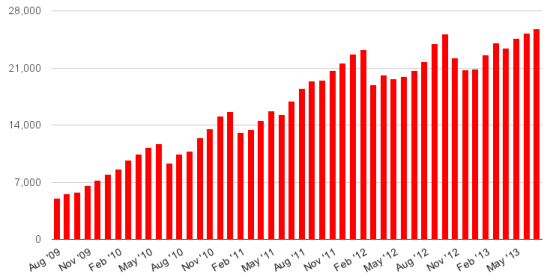
ScienceSim saw the most growth, with 512 new regions, almost doubling its land area. ScienceSim is a testing and development grid run by Intel. The non-profit OSgrid gained 507 regions, with a new high of 10,348 total regions, making it the largest OpenSim grid. Metropolis gained 202 regions. Kitely gained 109 regions, and AviWorlds gained 93 regions. All other grids gained 50 regions or less.
The total area of all 214 grids that reported their numbers this month was 28,136 regions, surpassing the total land area of Second Life by more than 1,000 regions.
This is the second month in a row that the total OpenSim land area has surpassed that of Second Life, and the gap continues to widen.
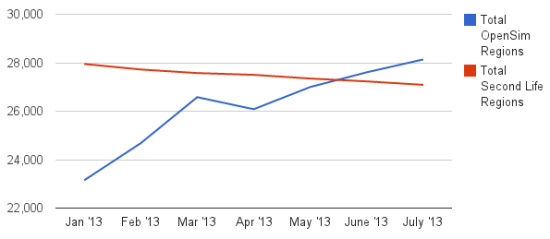
The data does not include the hundreds, or more, of private grids running the OpenSim software and used by schools, companies, non profits, individuals, and private social and roleplaying communities.
However, usage fell by over 1,500 actives this month on the top 40 grids, to 17,919 unique logins, possibly as a result of school breaks and vacations.
It should also be noted that, despite exceeding Second Life in land area, the public OpenSim grids currently trail far behind Second Life in active users.
Popularity rankings
For company and school grids, relative popularity is not an issue — the grids are set up for a specific purpose, and if they meet that purpose, then they are successful. The same is true for grids run by niche communities or that serve a special purpose not found elsewhere.
But when it comes to general-purpose social grids, the rule of thumb is: the bigger and busier, the better. People looking to make new friends look for grids that already have the most users. Merchants looking to sell content will go to the grids with the most potential customers. Event organizers looking for the biggest audience… you get the idea.
With that in mind, here are the 10 most popular grids this month:
- InWorldz: 6,933Â active users
- OSGrid: 3,126Â active users
- Avination: 2,241Â active users
- Island Oasis: 1,185Â active users
- Metropolis: 1,013Â active users
- Craft World:Â 523Â active users
- Kitely: 493Â active users
- 3rd Rock Grid: 384Â active users
- German Grid: 342Â active users
- AviWorlds: 305 active users
With the exception of AviWorlds, which was rebuilding after a server and hosting company migration, and Island Oasis, all of these grid lost active users this month.
Avination lost the most users, reporting a drop of 863 actives, or 28 percent of its user base. InWorldz lost 296 active users, or just 4 percent of its active user base. OSgrid lost 290 active users, or 8 percent of its user base. Kitely, which is particularly popular with educators and non-profits, lost 135 active users.
Grid News Roundup
InWorldz, OpenSim’s most popular grid, has made it possible for users on all grids except Second Life to have well-fitting mesh clothing, by hiring former Second Life developer Karl Stiefvater  to finish work on his mesh deformer project and then donating the code so that it can be used in any third party viewer. And, back in April, the grid released a tool that allows its residents to see their mesh objects on a website, via a WebGL-based viewer called Dreamshare.
On Kitely, usage declined with people going on vacations and spending less time in virtual worlds, Kitely founder and CEO Ilan Tochner told Hypergrid Business. “However, with needing to handle less support requests we’ve been able to spend more of our time focusing on developing the upcoming Kitely Market,” he added. For example, merchants can now view their stores as their customers will see them.

“The Kitely Market is designed to help join all hypergrid-connected grids into one viable ecosystem, finally creating a critical mass of content, merchants and buyers to help the metaverse evolve from a collection of small grids to a unified market that can attract serious investments,” said Tochner. “This should help rejuvenate interest in OpenSim from organizations who are rediscovering immersive environments due to devices such as the Oculus Rift.”
Tocher added that the grid has slightly changed the way PayPal payments will work. “Instead of having buyers pay directly to a merchant’s PayPal account, and thus exposing the parties to each other’s personally identifiable information, Kitely will act as a middleman and enable people to make purchases in real-money using their avatar identities.” In addition to ensuring privacy, this will also reduce the fees that merchants will have to pay, eliminate chargebacks for merchants, and in general reduce their administrative load.
“We’ve also decided to add various anti-fraud mechanisms to the Kitely Market,” he added. “One note worthy feature we’ll be including is the ability to automatically reclaim all copies of a bought item existing in Kitely if the payment for that item is refunded by PayPal, the credit card company, the merchant, or Kitely.”
These changes will increase operational risk for Kitely itself, however, and the grid will change slightly higher commissions for real money transactions. Commissions for payments made in Kitely Credits will stay the same.
“People comparing Kitely Market to the Second Life Marketplace are advised to take all the fees paid by buyers and sellers into account when calculating how much of each dollar a buyer spends in the marketplace will actually end up in the merchant’s PayPal account,” Tochner added, referring to the Linden Lab policies. “You’ll want to pay close attention to the 10 to 15 percent  higher price Linden Lab charges people who pay directly via US dollars, their 5 percent sales commission, and their 2 percent cash-out fee.”
More information about the Kitely market can be found in the most recent Kitely Mentor’s Group meeting notes. The market will go live by the end of the summer, he said, but the exact date has not been set yet. Meanwhile, there is still time  for interested merchants to list their items for free and be eligible to become a featured merchant.
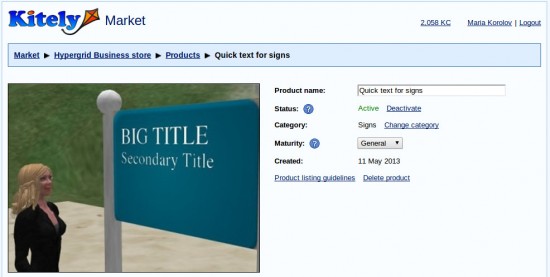
Metropolis Grid now hosts Metropolis Academy, offering free courses for content creators. The grid has also rolled out a Web-based chat feature based on the AjaxLife client. Metropolis is also in the process of switching its central grid services to Siminan, to allow for greater scalability, speed, security, and stability. “Similar to the Moses project, we need to prepare for larger grid events with a high number of simultaneously registered avatars on a single region,” grid administrator Lena Vanilli told Hypergrid Business.
Virtual Highway, with the help of developer Andrew Hellershanks, has created code that allows users to attach landmarks, notecards and objects to group notices. The feature is available on the Virtual Highway grid, and has also been donated to the OpenSim community.

“Virtual Highway is also enjoying the improvements seen with the full activation of BulletSim physics,” grid founder Gene Call told Hypergrid Business. “We thank Robert Adams for helping us with that project.” The grid has also reduced land prices from $75 to $60 for a full region, no setup fees, with a 5,000-prim homestead region available for $35 and a water region for $10 per month.
New attractions include the underwater adventure Enchanted Mermaid Isle and the recreation of historical “Wild West” town of Tombstone, Arizona.
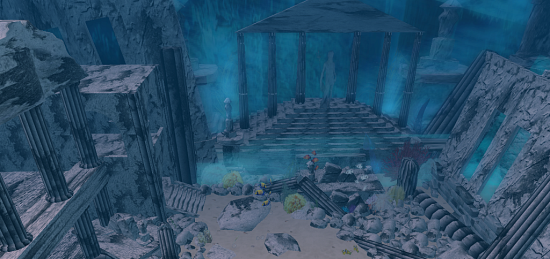
Avination, the second largest commercial grids, plans to roll out a new scripting engine later this month, with improved compatibility
with Second Life, increased reliability and higher performance. “Many things that could not be simply copied and pasted from Second Life will now
run without modification,” grid owner Melanie Thielker told Hypergrid Business. The weekend of July 20 and 21, the grid will host on the Cologne Festival on the Virtual Cologne region,  a rock, metal and industrial event that is held concurrently with the Cologne “Apmhi” goth festival. In addition, the grid will celebrate its third birthday near the end of August.
AviWorlds, after moving servers and hosting providers and rebuilding, has regained much of its traffic and users, grid owners Alexandro Pomposelli told Hypergrid Business. The currency has been restored. Merchants can now sell items for in-world AV$, and, in the International Market region, for real money via PayPal.
The grid has also hosted its first wedding ceremony.
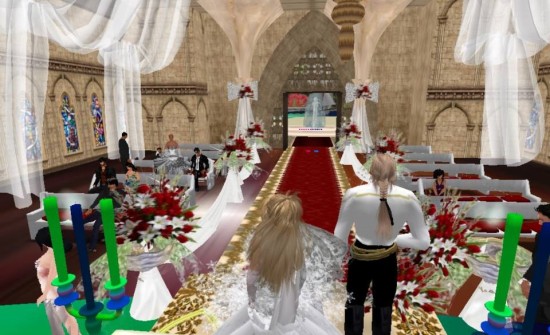
Littlefield Grid is now organizing a dance party in conjunction with the upcoming OpenSimulator Community Conference in September. The grid is also a community sponsor of the event.
“We just started to offer starter homes for our community free of charge,” grid founder Walter Balazic told Hypergrid Business, adding that the offer is on a first come, first serve basis. The starter homes are 100-prim skyboxes and are intended just to get people started in the virtual world. The grid has also opened a region which is entirely dedicated to gardening and landscaping, with all the content created by the community.
“We also implemented a partnering system which allows our users to partner, we have added a few “special” things to go along with it including a “partner certificate” we generate for the partners in world and pass to each of them to make it a little more lifelike and interesting,” he said. ”
The US military’s MOSESÂ grid is continuing to run tests of the Distributed Scene Graph, an Intel-sponsored technology that allows a single OpenSim region to hold hundreds of avatars. The next test is scheduled for Saturday, July 20, and the public is welcome to attend. Advance registration is required.
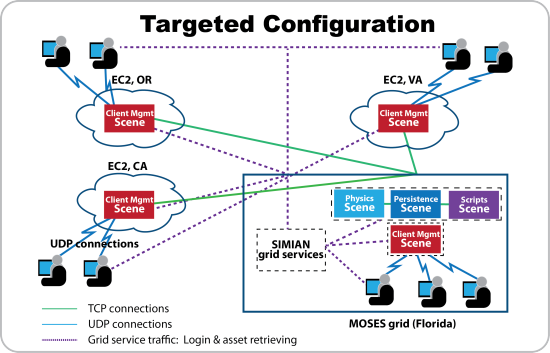
“This is a role play event set in a fictional country of Atropia and the players can choose to be either American soldiers or citizens of the town of Brentville,” said Douglas Maxwell, the science and technology manager for virtual world strategic applications at the U.S. Army’s Simulation & Training Technology Center. “The event takes place approximately ten years  from now after a war in the Caucuses region near the Caspian Sea.”
To make it easier to run simulations with a large number of participants, the grid has created a new role management system that allows scenario creators to enter new avatar roles into a web form and assign attributes to them. The roles can be customized and assigned avatar templates, and the avatars are created automatically.
“Â This is much more efficient than creating hundreds of avatars by hand and dressing them,” Maxwell told Hypergrid Business. The tool will be made available to the public under an open source license once it’s finalized.
“We believe this software would be useful to educators and trainers who would want to create a large number of avatars quickly for their students,” said Maxwell.
The team is also working on a new grid management system which allows administrators to see system and network loads, stop or restart individual regions, access individual simulator consoles, upload and download region archive OAR files. Once finished, this system will also be open sourced and released to the public.
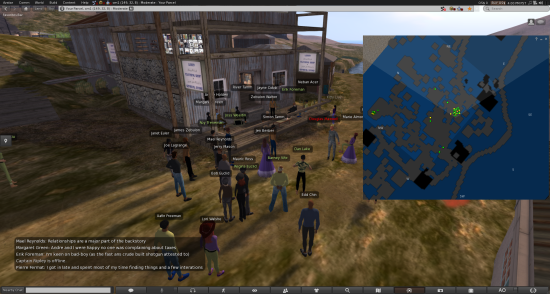
Spellscape grid is having a half-off sale on regions. A 20,000-prim region is now 12.50 pounds (US $19) a month, with the price locked in for six months. Spellscape is a witchcraft and vampire-themed role playing grid.
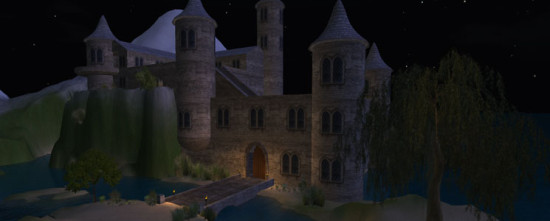
The role playing grid Virtual Reality has added support for the Lumiya viewer and can now be accessed via iPhones, iPads, and Android devices. Lumiya — no relation to the Nokia Lumia cell phone — is a lightweight Second Life client for mobile devices.
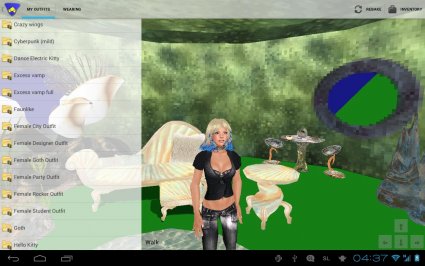
OSgrid, the largest OpenSim grid, resumed its town hall meetings this Sunday, and posted the chatlog of the event. Progress is continuing on the grid’s non-profit status, which will allow it to get government grants and see lower PayPal transaction fees. However, the most controversial issue, the continuing lack of hypergrid connectivity to the Metropolis grid, was not addressed.
Haven, a small commercial grid, has increased the prim allowance on its free starter homes from 234 to 263 prims. The grid has also lowered land prices, with the cost of a 15,000 prim region cut from $57 to $48 a month.
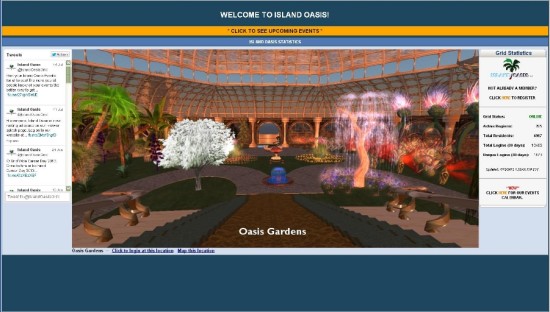
Island Oasis, a popular commercial grid, has added new options for residents looking to promote events, including in-world search for event listings. Event listings will now also appear on the viewer login screen. Residents will also be able to buy ads on the login screen starting in August.
Transitions
We’re listing the following grids as suspended this month:  Art, Desert of Aaravin, NexxtLife, Shangri-La Grid, Siberspace, StarGates Matrix, and Talon Grid.
Meanwhile, we’ve added several new grids to our database, including Aspire Eternals, AweSim Worlds, Virtual Builders, HunterOne, Traveler1, Majickal Network, Survivor, Pegasus, MintaKa, Da ‘Hood, Virtanen, World of BassUnited, Virtual Clubbing Life, Campus Virtuelle-Bildung.de, Ourworldonline, DarkRealm, Nilsen, World-DC, Zandramas, FleaGrid, LifeStyle 3D, and Spellscape.
If there’s a public grid we’re not tracking, please email us at editor@hypergridbusiness.com. There’s no centralized way to find OpenSim grids, so if you don’t tell us about it, and Google doesn’t alert us, we won’t know about it.
And if you plan to start a new grid, please note that we have 45 grids with the word “virtual” in the title in our database.
The official OpenSim website – OpenSimulator.org – began tracking download numbers for the software in January. The software was downloaded 2,286 times this past month, for a grand total of 11,242 downloads.
The Diva Distro, a more user-friendly version of OpenSim, has been downloaded 782 times over the past month. The total number of Diva Distro downloads now stands at 23,185. This does not mean that there are twenty thousand mini-grids out there, however — someone might download the software but never use it, or download it once and use it to set up many grids.
And it doesn’t include the Diva Distros used as part of the New World Studio distribution of OpenSim, which has a new release out, including a new premium edition with additional management features. There are now more than 795 worlds using the software.
Diva Distro is also part of Sim-on-a-Stick, a version of OpenSim packaged to run on a USB stick, which was downloaded 356 times since last month, for a new total of 21,259 downloads.
Meanwhile, according to data from The Hypergates, the number of hypergate jumps on their network this month decreased by 1,236, to 3,216. The system now has 656 registered hypergates, down by 12 from last month, on 67 different grids.
This data is very limited, however. For example, not all hypergates are part of The Hypergates network — anyone can create their own hypergate by dropping a script on any object, such as our touch or walk-through single-destination hypergate script. In addition, many people do hypergrid jumps without using any gate at all, simply by typing a hypergrid address into Map-Search, or by using a hypergrid landmark created during a previous jump. There is currently no way of tracking that traffic.
Meanwhile, Second Life continued to lose land according to data from GridSurvey, with 143 fewer regions today than the same time last month. The Second Life grid now has 27,088 regions, down 2,455 regions from this time last year, and 4,797 fewer regions than its peak in June of 2010. According to GridSurvey, the last time the grid was this small was in June of 2009.
July Region Counts on the Top 40 Grids
The list below is a small subset of existing OpenSim grids. We are now tracking a total of 685 Â different publicly-accessible grids, 319 of which were active this month, and 214 of which published their statistics. There were a total of 28,136Â regions, 320,324Â registered users, and 19,936Â active users on those 214 grids.
Many school, company or personal grids do not publish their numbers.
The raw data for this month’s report is here. A list of all active grids is here.
- OSGrid: 10,348 regions
- Kitely: 4,241 regions
- Metropolis: 2,845 regions
- InWorldz: 1,270 regions
- ScienceSim: 1,157 regions
- Avination: 651 regions
- MyOpenGrid: 572 regions
- Lost Paradise: 337 regions
- 3rd Rock Grid: 322 regions
- FrancoGrid: 239 regions
- Virtual Highway: 234 regions
- Island Oasis: 209 regions
- Grid Nirvana: 199 regions
- Moses: 185 regions
- Open Virtual Worlds: 182 regions
- SimudyneGrid: 175 regions
- Craft World: 164 regions
- SimValley: 151 regions
- Adreans-World: 150 regions
- Logicamp: 144 regions
- Dorena’s World: 137 regions
- AviWorlds: 136 regions
- Littlefield: 123 regions
- OpenSim.ru: 122 regions
- A Virtual World: 117 regions
- Virtyou: 110 regions
- Neuland: 109 regions
- Anettes Welt: 108 regions
- Infinite Grid: 106 regions
- Gay Nations: 99 regions
- PMGrid: 96 regions
- DreamNation: 91 regions
- Virtualife: 90 regions
- Paradis Land: 88 regions
- iTeach 3D: 83 regions
- iSynergy3D: 83 regions
- GerGrid: 81 regions
- Ingen-Lab: 80 regions
- YourSimSpot: 76 regions
- German Grid: 73 regions
- OSCC 2024 Submission Deadline Approaching - October 19, 2024
- AvatarLife Viewer adds video calls, screen sharing - October 19, 2024
- Spooky season brings more visitors to OpenSim worlds - October 15, 2024
